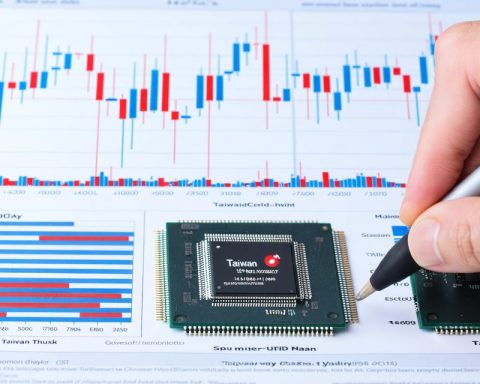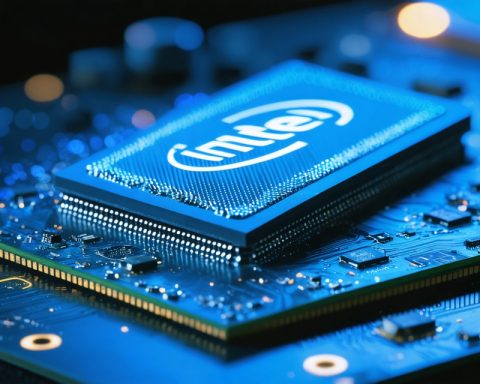- Samsung targets 2025 for a breakthrough with the Exynos 2500 chipset, aiming to increase its market share beyond the current 5%.
- The Exynos 2500 is expected to debut with the Galaxy Z Flip 7, positioning Samsung against leading SoC makers like Apple, Qualcomm, and MediaTek.
- Samsung faces production challenges due to setbacks in its 3nm process node, leading to continued partnerships with Qualcomm for flagship models.
- The upcoming Exynos 2500 will be featured in both premium and affordable Galaxy Flip models, potentially revitalizing Samsung’s presence in the market.
- Samsung’s innovation drive with the Exynos 2500 could herald a pivotal shift in the mobile chipset landscape if successful.
Samsung is gearing up to make a splash in the mobile chipset market with its upcoming Exynos 2500, setting sights on 2025 for a significant resurgence. Despite holding just a sliver of the market—only 5% in 2024—Samsung is fiercely determined to climb back into the spotlight and compete with current SoC titans like Apple, Qualcomm, and MediaTek.
The buzz around the Exynos 2500 is palpable, with tech insiders hinting at its debut in Samsung’s next innovation, the Galaxy Z Flip 7 series. This strategic launch could be the boost Samsung needs to reshape its market trajectory and rekindle its tech prowess.
Current Market Dominance: Today, Apple, Qualcomm, and MediaTek lead the SoC pack, while Samsung plays catch-up. Its reliance on Qualcomm’s Snapdragon for global flagship models like the Galaxy S24 Ultra underscores the challenge. Meanwhile, MediaTek’s Dimensity series lures manufacturers with a blend of cost-effectiveness and advanced features.
Overcoming Challenges: Samsung’s Foundry Division has battled with 3nm process node setbacks, impacting production rates. These hurdles have pushed Samsung to continue partnerships with Qualcomm, particularly for the Galaxy S25 series. Yet, Samsung’s resolve remains unyielding as it pushes for innovative breakthroughs.
The Exynos Edge: The new Exynos 2500 promises cutting-edge performance, arriving in both the flagship Galaxy Z Flip 7 and a new cost-effective option, the Galaxy Z Flip FE. This move could revitalize Samsung’s flagging market presence.
In this unfolding saga, Samsung aims not just to participate but to transform the chipset narrative. The Exynos 2500 could herald a new era for Samsung, marking a bold return to the forefront of mobile technology. Will this be the game-changer Samsung needs? Only time will tell.
The Exynos 2500: Can It Revitalize Samsung’s Place in the Chipset Arena?
As Samsung prepares its ambitious re-entry into the mobile chipset market with the Exynos 2500, several questions and insights emerge, shaped by the current competitive landscape.
What are the specific features and innovations expected in the Exynos 2500?
The Exynos 2500 is rumored to feature a next-generation architecture with advancements in AI processing capabilities, improved GPU performance, and enhanced efficiency due to a refined 3nm manufacturing process. The chip aims to deliver seamless multitasking and superior energy efficiency, possibly incorporating Samsung’s proprietary technologies like AMD RDNA graphics to boost mobile gaming performance. Furthermore, the Exynos 2500 is expected to support 5G connectivity, aligning with global trends towards faster, more reliable mobile internet.
How does the Exynos 2500 intend to compare against competitors like Apple, Qualcomm, and MediaTek?
Samsung’s Exynos 2500 is positioned to be a direct competitor to Apple’s A-series chips, Qualcomm’s Snapdragon series, and MediaTek’s Dimensity lineup. In comparison:
– Apple’s A-series is renowned for its tightly integrated ecosystem and superior CPU performance.
– Qualcomm excels in graphics and connectivity, consistently pushing the envelope with features like Snapdragon Elite Gaming.
– MediaTek focuses on providing a balanced price-to-performance ratio with advanced multimedia capabilities.
Samsung’s approach with the Exynos 2500 will likely focus on closing the performance gap while providing better affordability and distinct features that can attract both high-end and budget-conscious consumers.
What is the market forecast for Samsung’s chipset endeavors, and how will Exynos 2500 impact its share?
Market analysts predict a cautious yet optimistic rise in Samsung’s chipset market share post-Exynos 2500, potentially capturing up to 10% of the market by 2026. This anticipated growth is underpinned by:
– Strategic partnerships and Samsung’s own device integration.
– Innovations packed into Exynos 2500 aiding in regaining consumer trust.
– A projected increase in demand for premium and mid-range smartphones, particularly in Asia and emerging markets, where Samsung has a strong presence.
If the Exynos 2500 exceeds expectations, it could catalyze Samsung’s resurgence, enabling the company to further invest in R&D for subsequent iterations.
For more insights into Samsung’s developments and corporate strategies, visit Samsung Newsroom.



















